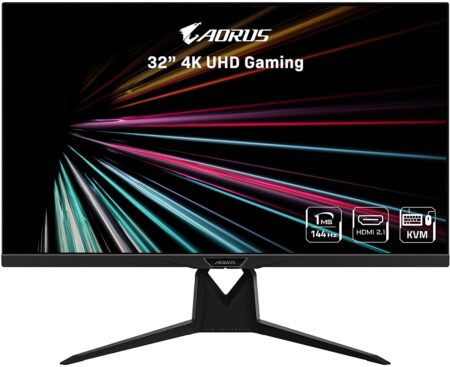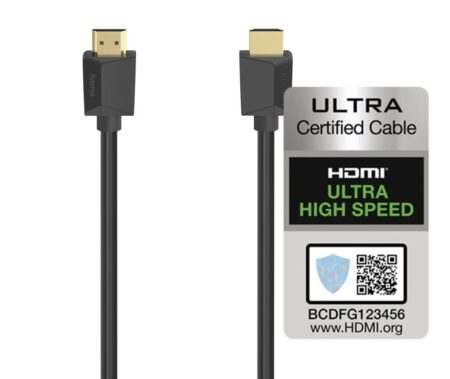So you just bought a shiny new PlayStation 5, but you can’t seem to get the 120FPS as promised by the console. So naturally, this would beg the question, “how to get 120FPS on PS5?”
To get 120FPS with your PS5, you must have suitable devices, games, and settings.
This includes having the right monitor, a suitable cable, and a compatible game since not all PS5 games support gameplay at 120FPS.
In the following text, I will discuss getting those juicy 120FPS on your PS5.
TABLE OF CONTENTS
Which Modes Can You Run PS5 At?
The following information helps you understand the limits of PS5 and the specs you need to look out for in the display devices.
PS5 supports the following modes:
- Full HD resolution at 60Hz (60 frames per second)
- Full HD Resolution at 120Hz
- 4K Resolution at 60Hz
- 4K Resolution at 120Hz
It also supports 720p resolution – but who plays at 720p these days?
The critical point is that PS5 supports 120Hz (120FPS) mode on both FHD and 4K modes.
So How To Get 120FPS on PS5?
To get 120FPS on PS5, you need to have the following:
- A Monitor or a TV that supports a 120Hz Refresh Rate of at Least
- An HDMI Cable that conforms to HDMI 2.1 specs
- A game that Supports 120FPS mode
- Selecting the Right Settings on PS5
1. A Monitor or TV That Supports 120Hz at Least
This is a no-brainer. To support 120FPS, you naturally need a monitor, TV, or projector that supports 120Hz.
Refresh Rate and Frame Rate, while related, are NOT the same. The refresh rate tells you how many times the screen has the potential to change the image in a second.
Since frames of a game are nothing more than images. 120Hz means the TV or the monitor can display 120 Frames Per Second.
Unfortunately, most average monitors and TVs only offer a 60Hz refresh rate. Meaning they can support a max frame rate of 60 FPS.
And hence, a 60Hz or even a 75Hz monitor will NOT support 120 Frame Per Second naturally.
Will PS5 Work on 144Hz, 165Hz and 240Hz Monitors and TVs

Fortunately, a monitor or a TV higher than 120Hz can support 120FPS. So, if you have a monitor or a TV with 144Hz, 165Hz, 240Hz, etc., refresh rates, then fortunately, your console would support 120FPS.
It should be noted that the PS5, in this case, will cap at 120Hz. So if you have a 144Hz monitor, PS5 will NOT run the games at 144FPS. It will be capped at 120FPS.
Read in Detail: Does PS5 Support a 144Hz Refresh Rate?
Summary: You need a monitor or a TV with 120Hz or higher to get 120FPS.
2. An HDMI Cable that Conforms to HDMI 2.1 Specs
In addition to having the correct display, you must have the right cable type.
You see, HDMI cables are NOT the same. They are differentiated by the amount of data they can carry.
The following table shows the different cables and the version of the HDMI interface they are good for.
| HDMI Standard Certification | Max Data Rate Supported | Specs Supported | Best Port |
|---|---|---|---|
| Standard | 4.95 Gb/s | 720 or 1080P @ 60Hz | <1.4 |
| High Speed | 10.2 Gb/s | FHD @ 60Hz QHD @ 60Hz 4K @ 30Hz | 1.4 |
| Premium High Speed | 18 Gb/s | 4k @ 60Hz | 2.0 |
| Ultra High Speed | 48 Gb/s | 4K @ 60Hz 8K @ 120Hz 10K @ 120hz | 2.1 |
So here are the key points:
- To get 120FPS on a Full HD monitor or TV, you need an HDMI 1.4 cable.
- To get 120FPS on a 4K monitor or TV, you need an HDMI 2.1 (Ultra High-Speed Cable).
PS5 has an HDMI 2.1 port and a 5ft HDMI 2.1 cable. This cable can work on Full HD@120Hz monitors and TVs with 4K monitors or TVs that support 4K@120Hz with an HDMI 2.1 input port.
However, if you plan to purchase a separate cable for your PS5, ensure it conforms to the standard PARTICULARLY if you want to run at 4K@120Hz.
Also, when purchasing higher standard cables such as Ultra Premium or HDMI 2.1 cables, ensure they are certified by HDMI.org. Certified wires have the following label on the packaging.

Also Read: Does PS5 come with HDMI 2.1 cable?
3. A Game That Supports 120FPS Mode
In addition to having the proper hardware, you must have a suitable Game.
All games do NOT support 120 FPS.
Take, for instance, Horzing on Forbidden West – a PS5 exclusive. This game only supports 1080P@60FPS and 4K@30FPS modes only. There is no option for 120FPS.
The following, however, are some of the games that DO support 120FPS modes:
- Apex Legends
- Borderlands 3
- Call of Duty: Warzone
- Cyber Shadow
- Destiny 2
- Dirt 5
- F1 2021
- Fortnite
- Ghost runner
- Ghostwire: Tokyo
- Knockout City
- Quake
- Rainbow Six Siege
- Rocket League
TechRadar has a complete list of all the games that support 120FPS mode.
As you can see, the older and less graphically demanding games are supported at 120FPS.
It would be best if you also learned that PS5 DOES NOT aim to deliver 120FPS on most of its titles. The following is what Christopher Mullins of Sony PS5 said about this matter:
“4K at 120Hz is… interesting, but actually with the next-gen consoles the baseline performance is to hit a really good native 4K/60Hz performance, and have that performance across many games.” – Christopher Mullins – Reported by Techradar
Hence, in most cases, you wouldn’t even need to worry about getting a 120Hz monitor or TV anyway.
4. Selecting the Right Settings
And finally, to enable 120FPS, you must have the correct settings on PS5 selected.
If you have hooked up your 120Hz TV or monitor to PS5 but do not see the option for enabling 120FPS.
The critical setting that enables 120FPS is changing the game Preset to “Performance Mode.”
To do this, head over to the following:
- Settings Menu by clicking the gear icon on the main screen.
- Head over to Saved Data and Game/App Settings
- Game Presets
- Change mode to “Performance Mode.”
In addition to changing the PS5 settings, you must enable the 120FPS mode within the game.
The following video explains this further in-depth:
Final Words
The article above details how to get 120FPS on PS5. If in case after going through all the pointers above, you still can’t get 120FPS, then that could indicate:
- The game does not support 120FPS mode
- Your monitor or TV does not support 120Hz
- You are using an HDMI cable that does not conform to HDMI 2.1 interface.
I hope this article helped; if you have any questions or comments, let me know below. Happy Gaming.
FREQUENTLY ASKED QUESTIONS
1. What kind of TV or monitor do I need to play games at 120FPS on PS5?
To play games at 120FPS on PS5, you will need a TV or monitor that supports a 120Hz refresh rate.
Most newer TVs and monitors will support this refresh rate, but it’s important to check the specifications before making a purchase.
Additionally, you will need to make sure that the HDMI cable you’re using is capable of transmitting the necessary bandwidth to support 120FPS.
2. How do I enable 120FPS on PS5, and is it a simple process?
Enabling 120FPS on PS5 is a relatively simple process. First, make sure that your TV or monitor supports a 120Hz refresh rate and that the HDMI cable you’re using is capable of transmitting the necessary bandwidth.
Then, go to the PS5 system settings and select “Screen and Video” from the menu. From there, select “Video Output” and choose the “120Hz Output” option.
Finally, select “Enable 120Hz Output” to enable 120FPS on your PS5.
3. Can I play PS4 games at 120FPS on PS5, or is it limited to PS5 games only?
Not all PS5 games can run at 120FPS, as it depends on the game’s development and optimization.
Some games will be limited to 60FPS or lower, while others may support up to 120FPS. It’s important to check the game’s specifications and requirements before purchasing to ensure that it can run at 120FPS on your PS5.
4. Are there any settings or adjustments I can make to improve FPS performance on PS5?
To improve FPS performance on PS5, there are a few settings and adjustments you can make.
First, make sure that your PS5 is running the latest firmware and that your game is up-to-date. You can also try closing any other applications or games that are running in the background to free up system resources.
Additionally, you can try adjusting the graphics settings in the game to lower the resolution or turn off certain visual effects.
Finally, make sure that your TV or monitor is set to game mode to reduce input lag and improve performance.
